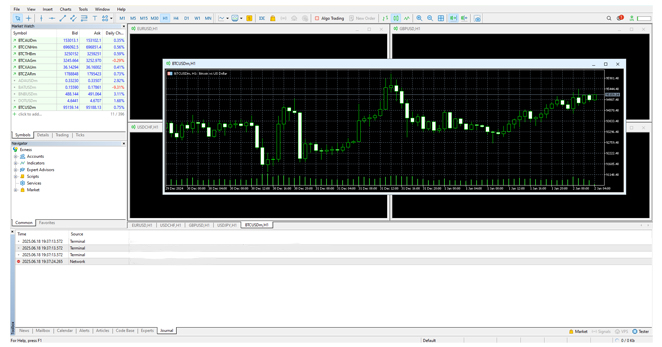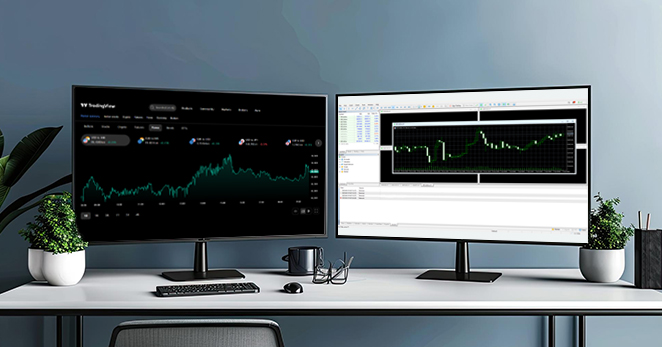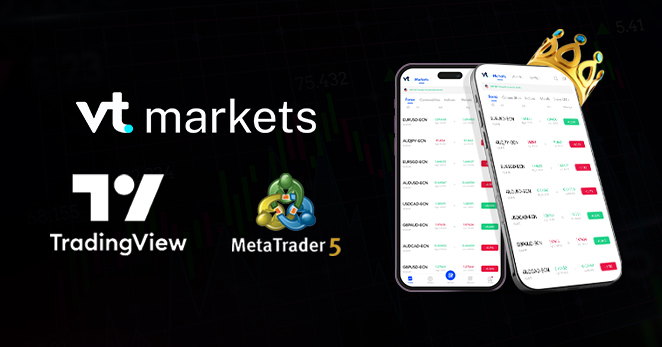
Choosing the right trading platform can be the make-or-break decision for any trader. The right platform not only offers the technical tools you need but also supports your trading style, helps you stay informed, and improves your overall experience. Two platforms dominate the conversation today: TradingView and MetaTrader.
In this detailed comparison, we’ll explore the unique strengths of each platform and help you decide which one aligns best with your trading goals.
TradingView: A Modern Approach to Charting and Analysis

In recent years, TradingView has become a popular platform for traders who rely on chart-based technical analysis. Its sleek and modern design provides an intuitive interface that appeals to both beginners and experienced traders. Navigating TradingView is straightforward, allowing users to easily access a wide range of tools, indicators, and charts without the frustration of complicated menus.
One of the standout features of TradingView is its extensive library of technical indicators and drawing tools. Whether you’re plotting simple moving averages or analyzing complex chart patterns like harmonic structures and Fibonacci retracements, TradingView offers nearly every tool a technical analyst could need. Additionally, its interface is highly customizable, allowing traders to organize their workspaces according to their preferences, ensuring quick access to the features they use most often.
Beyond its charting capabilities, TradingView offers a vibrant social community, where traders from around the globe share analysis, strategies, and ideas. This collaborative environment not only helps new traders learn but also allows seasoned professionals to gain new perspectives on the markets. The ability to follow expert traders, comment on shared ideas, and even publish your own charts creates an engaging learning environment.
Another key aspect of TradingView is its ability to synchronize across devices seamlessly. Whether you’re working at your desk or on the go, TradingView keeps your workspaces, charts, and settings updated on both desktop and mobile apps.
TradingView offers Pine Script ,a relatively simple coding language that allows users to create custom indicators or build basic bots. While not as advanced as other automation platforms, it provides enough functionality for many retail traders who want to experiment with algorithmic trading.
MetaTrader: The Industry Standard for Forex Trading

MetaTrader 4 & 5 has long been considered the gold standard for forex traders worldwide. Launched in the early 2000s, MetaTrader has built its reputation on reliability, depth, and powerful trading features that cater especially well to experienced and professional traders.
MetaTrader is highly appealing due to its powerful automation capabilities with Expert Advisors (EAs). These automated trading systems enable traders to create, test, and implement complex trading strategies without the need for constant manual input. For algorithmic traders, MetaTrader offers a strong environment to experiment with advanced systems, optimize performance, and execute trades automatically based on predefined conditions.
MetaTrader also shines when it comes to back-testing and strategy development. Traders can run historical simulations using extensive market data to assess how their strategies would have performed under various market conditions. This feature is invaluable for fine-tuning automated systems before deploying them in live markets.
Eventhough the MetaTrader interface may seem outdated compared to more modern platforms, it offers a high degree of customization. Users can adjust almost every aspect of the platform, including chart layouts and technical indicators, and can also integrate third-party plugins or trading tools from the extensive MQL5 marketplace.
MetaTrader’s versatility extends beyond forex, offering access to a broad range of financial instruments including commodities, indices, CFDs, and in some cases, stocks. This makes it a comprehensive solution for traders who wish to diversify across multiple asset classes.
For traders who demand high-speed execution, especially for automated systems, MetaTrader supports Virtual Private Server (VPS) integration, ensuring stability and rapid trade processing even during volatile market conditions.
TradingView vs MetaTrader

While both TradingView and MetaTrader offer valuable features, they serve slightly different audiences and purposes. TradingView stands out for its visual appeal, user-friendly interface, and advanced charting features, making it especially appealing to discretionary traders who depend on manual analysis. On the other hand, MetaTrader is preferred by those who value automation, comprehensive testing capabilities, and complete control over their trading systems.
TradingView’s subscription-based model offers different levels of access to features such as multiple charts per screen, additional indicators, and more historical data. MetaTrader, on the other hand, is free to use, though many traders purchase custom indicators, scripts, and Expert Advisors to expand its functionality.
Which Platform Should You Choose?

The decision between TradingView and MetaTrader largely depends on your trading approach and personal preferences. If you are new to trading, prefer an intuitive interface, and enjoy analyzing charts with a community-driven approach, TradingView may be the perfect fit for you. Its user-friendly interface, comprehensive charting tools, and collaborative environment make it ideal for learning and developing your trading skills.
On the other hand, if you are an experienced trader who relies on automated strategies or wants full control over your trading algorithms, MetaTrader provides the depth, flexibility, and technical power required to execute sophisticated systems. The ability to back-test, automate, and fully customize your trading experience gives MetaTrader a significant advantage for system-based traders.
In a nutshell

Both TradingView and MetaTrader are exceptional platforms that cater to distinct segments of the trading community. Rather than focusing on which platform is universally better, traders should evaluate which platform aligns with their trading style, goals, and level of expertise.
Fortunately, VT Markets allows traders to connect both platforms to their trading accounts. This opens up the possibility to analyze markets on TradingView while executing trades through MetaTrader, combining the best features of both platforms.
Before making a final decision, consider testing both platforms using demo accounts. This will allow you to experience which platform feels more comfortable and better supports your trading strategies.
Create a live account now & start trading!







